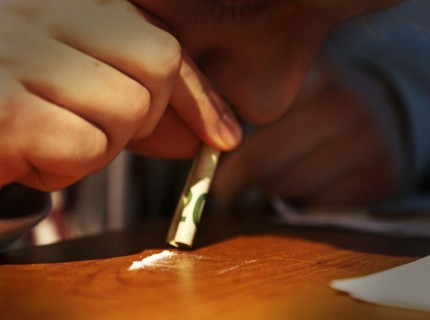Managing Editor
Photo by Michael Wong
It’s never fun when the party ends.
Last year at New York’s Electric Zoo music festival, attendees Jeffrey Russ and Olivia Rotondo died and four more were hospitalized due to overdose or other related complications from taking ecstasy in its pure form, known as “molly,” the New York Daily News reported in September.
While the party ended early for Russ and Rotondo, it didn’t go on much longer for anyone else. The city shut the festival down before its last day, citing safety concerns and 31 drug-related arrests during the first two days of the festival.
In stark contrast, a victim of childhood sexual abuse and survivor of a near-fatal car crash, Rachael Hope, told CNN that ecstasy helped her immensely in battling post-traumatic stress disorder (PTSD) after she was administered the drug during her participation in a clinical research study.
Dr. Perry Kendall, Provincial Health Officer in British Colombia, argued in 2012 that ecstasy in its pure form could be safe as long as adults use it responsibly, CBC news reported.
“You can’t get molly in Grand Junction,” said a 21-year-old junior Environmental Science student at CMU, hereby referred to as “George.”
George started regularly using ecstasy less than a year ago. He says he usually crushes the pills he gets and snorts them over the course of several hours.
George is one of the 12.9 percent of people in the United States aged 18-25 who have used 3.4-methylenedioxy-methamphetamine (MDMA) either in its pure form or cut with other drugs, according to a 2012 study from the National Institute on Drug Abuse.
George says he usually gets the drug cut with cocaine in tablet form, from a friend who has a connection.
“You do a lot (of different things when taking the drug),” George said, citing the general euphoria and happiness generated by the drug’s effect of releasing large amounts of dopamine and serotonin in the brain.
George says that the typical rave culture of dancing and “getting your face rubbed,” is more common with molly than with the stuff he gets here, acknowledging the lack of a “rave culture” in Grand Junction.
“It’s kind of a mental drug,” George said. His experiences are more mellow than those of the Electric Zoo attendees, and he usually doesn’t find himself planning his activities around his being on the drug, except, “You always want to listen to music.”
George says he usually starts using the drug on Friday or Saturday nights.
“Sometimes it’ll carry over to Sunday,” he said. “Your next day is better than a hangover. You feel fatigued, but there’s no headaches or anything like that.”
Occasionally, George might have a little bit on Sunday or Monday morning, which he says, “levels you out.”
George says his studies and school life aren’t affected at all by the drug. In fact, he claims that they’re better since he stopped drinking so much.
“Honestly, I don’t drink anymore,” George said, continuing that he might drink once or twice a month, but never in high quantity. “You don’t forget stuff (on ecstasy). I hated blacking out when I drank.”
Less than a year before Dr. Kendall made his statements about MDMA, 18 people died in British Colombia from ecstasy-related deaths, at least five from taking “dirty” ecstasy, which contained a less refined amphetamine.
“I got some stuff a little bit ago. They were (imprinted with) little Hondas,” George said, stating that they were notably different from the pills he usually gets and that the “comedown” was pretty rough. George has some standards concerning what his MDMA is cut with and says he avoids the drug when it’s cut with heroin or meth. He has heard stories from others about bad batches bought from strangers on the street. He says a friend with a consistent connection to a consistent product is his way of avoiding bad pills.
George seems to have a grasp on the risks associated with his drug use, and his casual honesty about it doesn’t evoke an obsession or an addiction, despite his being a frequent user. With deaths and hospitalizations on the rise among young people and new research touting the benefits of pure MDMA, George is functioning in the middle of a controversy.
His advice to someone who is trying the drug for the first time further complicates a debate between scientists and concerned parents, but it keeps the party going.
“Don’t overthink it.”
ealinko@mavs.coloradomesa.edu

Recent Comments